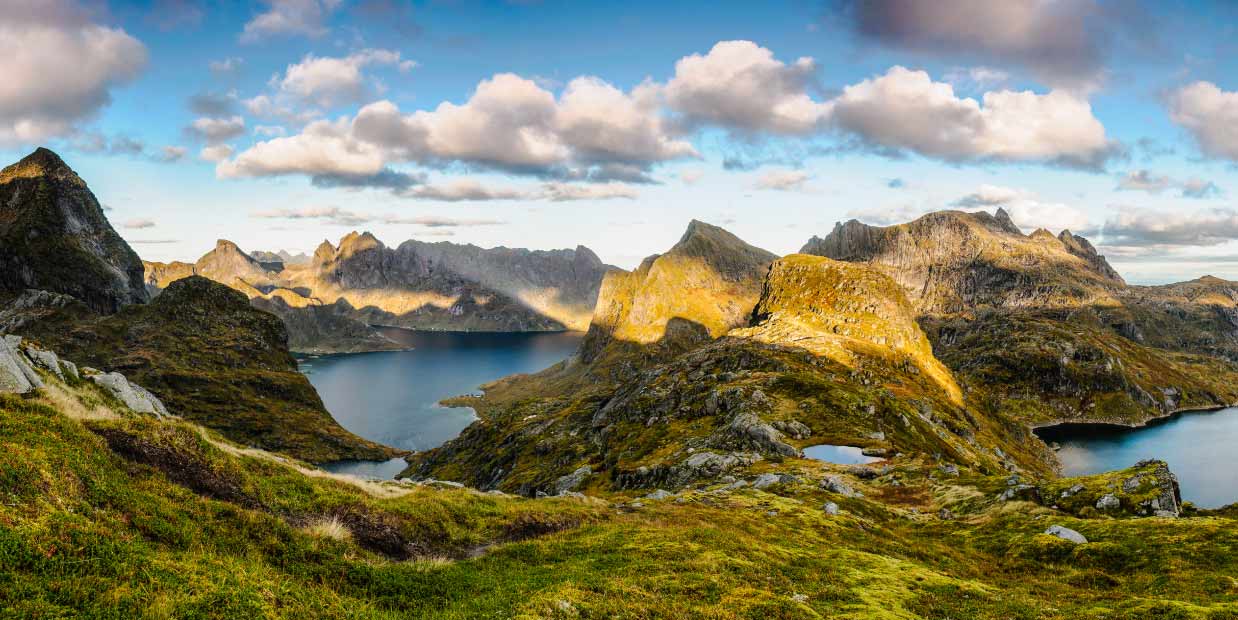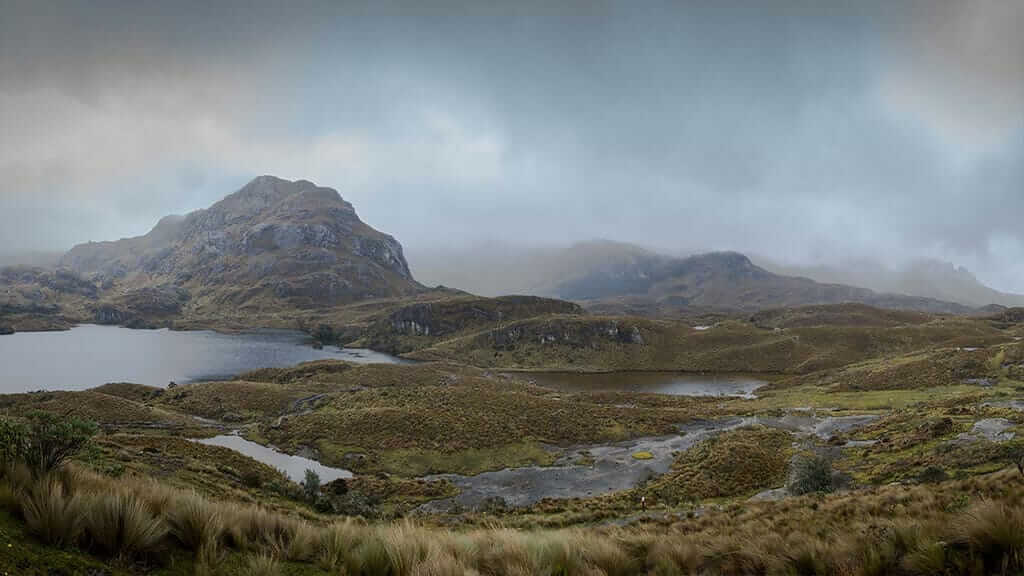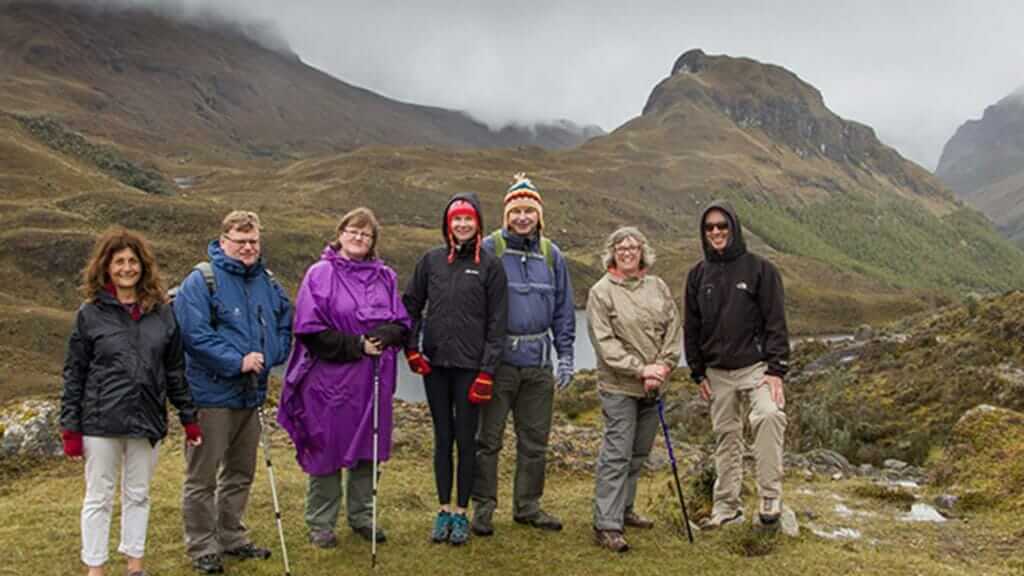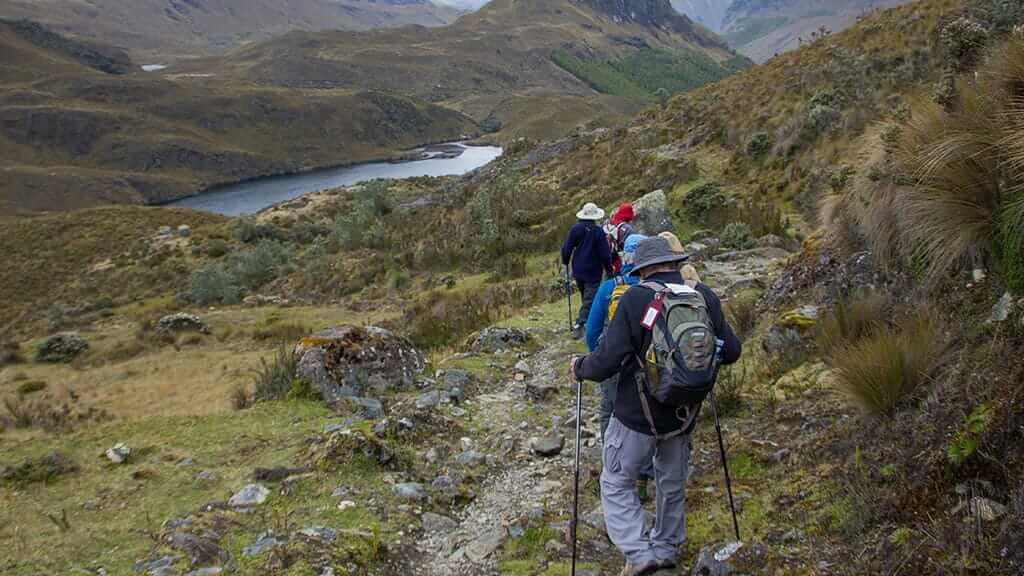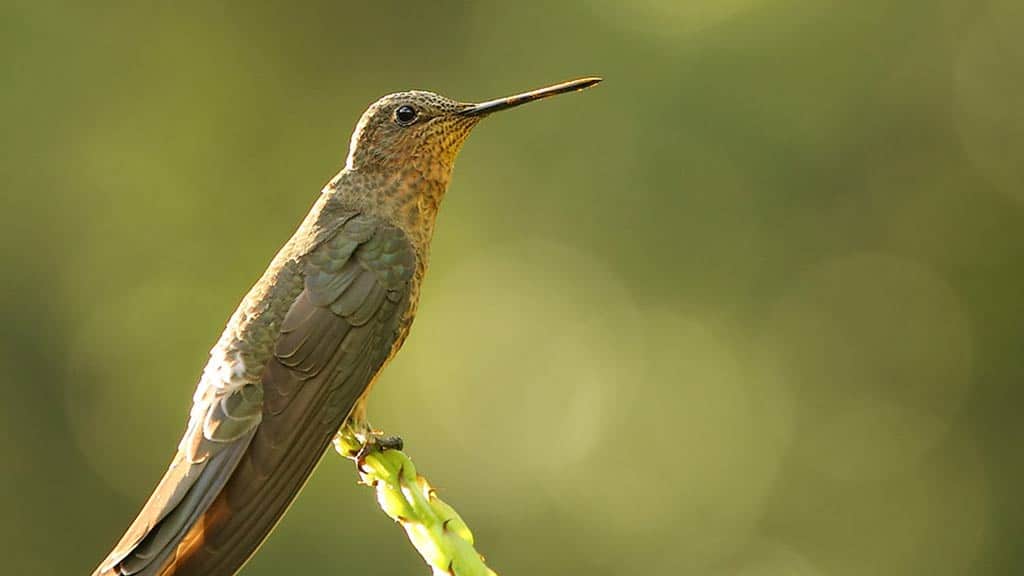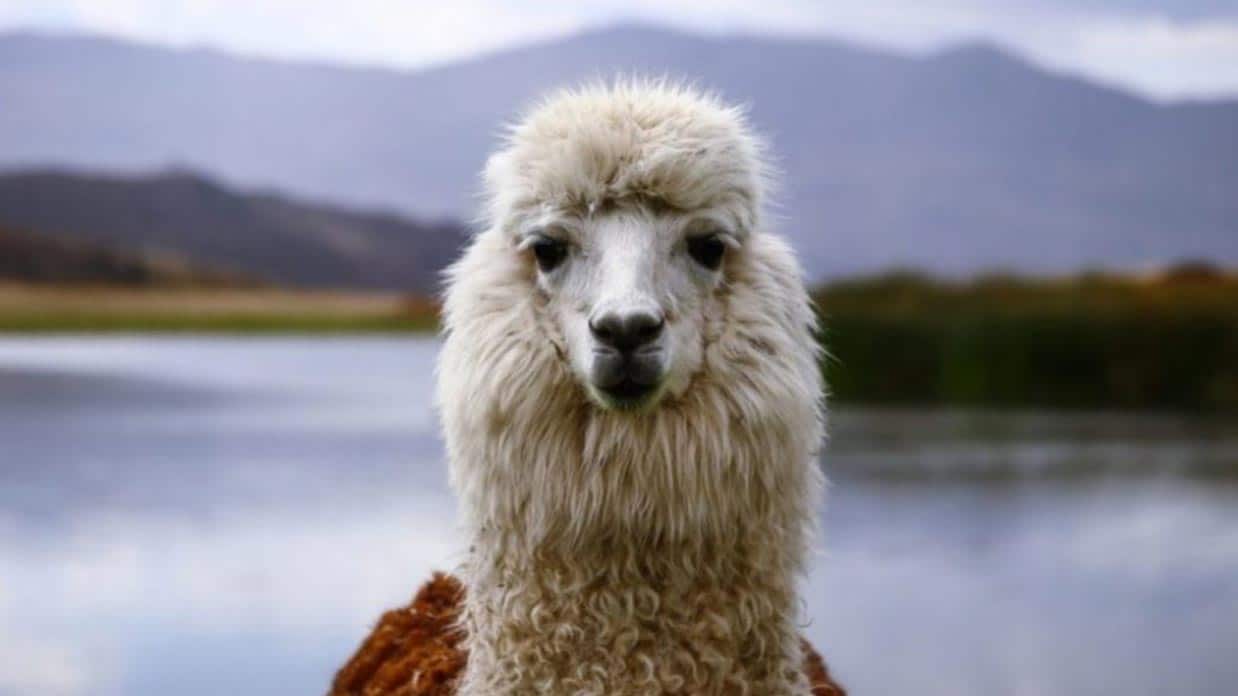El Cajas National Park, Ecuador
El Cajas National Park is one of Ecuador’s best-kept secrets. This Lake District of Ecuador is home to stunning glacial valleys, moors and forests, and a network of pristine mountain lakes. There’s fairytale magic here, like the natural set of a Lord of the Rings movie. But you’ll find no hobbits, instead keep your eyes open for Andean Condors, Spectacled bears, hummingbirds, and wild alpaca. For hikers, El Cajas National Park is an outdoor playground – the perfect place to escape and enjoy nature in its purest form.
Keep reading for a complete visitor guide to El Cajas National Park Ecuador. Everything from trip planning tips, to trail recommendations and possible wildlife sightings. Get your hiking boots on, we're heading in ...
SECURE YOUR ECUADOR TRAVEL
Get a FREE personalised quote todayAbout El Cajas National Park
El Cajas National Park is a place of water. A network of 786 lakes, lagoons & ponds connected by crystal clear streams. A carpet of sponge-like plants that absorb water, releasing it slowly over weeks and months. Frequent rains and moist clouds ensure the cycle continues.
From water springs life. The moors and cloud forests are teeming with mammals, birds, and unusual plants.
Humans also depend on the water from El Cajas National Park. Straddling the continental divide, every drop of rain that falls to the west of Cajas flows to the Pacific Ocean, and every drop to the east drains into the Amazon River. On route to the Amazon, the Tomebamba and Yanuncay rivers flow through picturesque Cuenca city, providing inhabitants with pure drinking water sourced from Cajas.
El Cajas National Park Elevation
Cajas National Park's elevation ranges from 3,100m (10,170ft) to 4,450m (14,600ft) above sea level. That is some pretty serious altitude! You’ll feel the thinner air as soon as you arrive. With less oxygen to breathe your lungs will get a great workout, and your heart will beat faster.
We recommend some acclimatization before visiting El Cajas National Park. Ideally try to spend a few days over 2,500m or higher, so that your body is already producing more red blood cells to carry oxygen around your system.
For tips to help avoid altitude sickness, check out our Quito elevation blog.
El Cajas Habitat
El Cajas National Park encompasses over 28k hectares of protected national parkland. The breathtaking scenery was sculpted by ancient glacial activity, leaving behind a landscape of U-shaped valleys, hills, moraines, and glacial lakes. This stretch of the Andes is older and less volcanically active than the Avenue of the Volcanoes further north.
In Cajas National Park you’ll find two striking ecosystems. The higher altitudes consist of tundra-like Andean Paramo – rolling moors of grassland and low shrub. Lower down, cloud forests and perennial high mountain forests follow the ravines near streams.
History of El Cajas Ecuador
The name “Cajas” is believed to originate from the local Quichua words “Cassa” (Gateway to the snowy mountains) or “Caxa” (cold), although there are various disputed theories.
What we do know for sure is that El Cajas has long been an important natural passage between the coastal and Andean regions of Ecuador. Since pre-inca times there is evidence that roads and trading routes were established, which the Incas further developed under their empire. Within El Cajas National Park today there are 28 different archeological sites, proving that there was also some degree of settlement in the area back in those days.
Even today El Cajas National Park still lies on an important route between Highland and the coast. It is the main transit road route between the mountains of Cuenca and the lowland banana and cocoa plantations of Guayaquil.
El Cajas National Park Weather
With an average temperature of just 5 degrees Celcius (high 15, low -1), El Cajas visitors are recommended to dress appropriately before a visit.
Expect four seasons in one day – a strong sun when it shines, a cold wind when it bites, and a high probability of rain most days. It’s a forecast that may sound quite miserable, but in reality, helps to create the dark and mysterious atmosphere so befitting of the Cajas forests and lakes.
Cold weather gear like gloves and wooly hats are recommended, as are rain gear and warm layers to keep the cold out. Perhaps even spare dry layers just in case you get soaked. You’ll also need a good pair of walking boots to cover uneven terrain that is sometimes muddy. Sun protection is always a good idea – sunglasses and high-factor suncream to avoid burning. Of course, hikers will also need to bring along plenty of drinking water and energy snacks to keep them going.
How to visit El Cajas National Park?
Located just 30km west of Cuenca city, El Cajas National Park is quite easy to visit. The most popular option is a day tour for trekking, but it’s also possible to camp overnight and fish.
El Cajas opens from 8 a.m. through to 16:30 p.m. every day. At the time of writing, there is no entry fee, but visitors must show a valid ID at the park ranger station. Basic facilities there include bathrooms and a basic café / shop.
1. El Cajas National Park Tour
To get the most out of a visit we recommend going with a guide. A good naturalist will be able to identify plants and birds, as well as explain all about the Andean Paramo ecosystem. It's also easy to get lost if fog rolls in, so a knowledgeable guide ensures a safe trip.
Both shared and private tours to El Cajas National Park from Cuenca operate most days. Shared tours are more economical, while private tours enable more flexibility and itinerary personalization.
If you're planning to spend a few days exploring the Cuenca area then check out our Cuenca highlights 4-day tour itinerary. This popular trip includes El Cajas trekking, as well as visits to the Inca ruins at Ingapirca, and the best sites in and around Cuenca city.
2. El Cajas National Park On Your Own
For those traveling on a tight budget, you can also visit El Cajas by bus. Regular morning departures leave from Cuenca’s Terminal Terrestre bus station towards Guayaquil. Just let the driver know that you want to jump off at the park entrance. It takes around 1 hour to drop off at El Cajas visitor center.
You’ll need to register at the park ranger's office. The ranger guide can explain which trails are open, and help with recommendations in Spanish. Return buses stop on the main road at the same visitor center for the journey back to Cuenca.
If you do decide to go it alone then remember to take care, and not stray from the paths. Every year visitors do get lost, sometimes with serious and even fatal consequences. The cold and unpredictable weather at El Cajas makes it an unforgiving habitat for those who lose their way.
GET FREE ADVICE
From an Ecuador destination expert todayEl Cajas National Park Trails
El Cajas has something for all levels of outdoor enthusiasts. Some trails start as short as several hundred meters, for visitors who want to see nature but lack the physical ability for long hikes. Longer trails require multi-day exertion and outdoor camping.
Here are some of our favorite trail suggestions for Cajas hiking.
1. Uku – an easy path leading 1.7km around Llaviucu lagoon. This route is good for bird watching and allows fishing from the lake shore.
2. Toreadora – 2.2km around Toreadora Lake on easy terrain from the visitor center.
3. Ilincocha – a shortie but a goodie! This 300-meter path is good for birding and showcases a small Polylepis (Quinoa) high-altitude forest.
4. Nature and Human History Trail – for a moderately challenging 4.2km hike, trekkers head from Toreadora lagoon, through Polylepis forest at the foot of Cerro San Luis, to Lagunas Unidas and Totoras. This is my personal favorite hike at Cajas National Park, with great views throughout when the weather is clear.
5. Cerro San Luis trail - a more technical 2.2km trail leads to the summit of Cerro San Luis (4,264 m) - a natural lookout with sweeping views on a clear day.
6. The Cajas Inca Trail and larger lagoons – a longer 18km route taking two days with overnight camping.
Other interesting Cajas trails include Quinuas Valley (8.1 km), Encuentro con las Burines (5.3 km), and the Great Osohuaycu (12.2 km).
El Cajas National Park Wildlife & Nature
El Cajas Plants & Flora
The Andean Paramo habitat is exposed and harsh for plant life, but there is interesting flora to be found if you know where to look.
The dominant plant is a sturdy straw grass that grows pretty much everywhere. Also, look out for interesting cushion plants – their spongey consistency is perfect to absorb and store water, which is then slowly released. These plants play a vital role in maintaining humidity in the local ecosystem and ensuring a steady water supply for Cuenca’s rivers.
Tiny high-altitude flowers add colorful yellows, reds, and purples to the green cushion carpet. Some are endemic flowers, found only in El Cajas Ecuador.
Perhaps the most fascinating plant at El Cajas is the Polylepis (Quinoa) – the world’s highest-altitude tree. It’s easy to recognize for its thin, red-brown, peeling bark, which also gives it the nickname "the paper tree". These trees have heaps of character, with gnarled and twisting branches reminiscent of a haunted fairytale forest. Remarkably the Polylepis can grow above the regular tree line, at altitudes of up to 5000m. But there is a price to pay for occupying such lofty heights; the Polylepis grows painfully slowly, taking 160 years to add just ½ inch in diameter!
Birdwatching at Cajas National Park
Cajas National Park is a dream for bird watchers. Not only is El Cajas recognized as a Ramsar Wetland of International Importance site for migratory birds, but it's also home to an impressive 157 different bird species.
While the Andean Condor is often the main target for visiting birders, colorful species like parrots, toucans, tanagers, and guans can also be spotted.
Of the 24 hummingbird species found in El Cajas National Park, look for the Giant Hummingbird (Patagona Gigas) – the largest hummingbird species on the planet. The pretty Violet-throated Metaltail (Metalura Gorjivioleta) is a rare El Cajas endemic. The Ecuadorian Hillstar is another interesting bird to look out for, often sitting photogenically atop orange Chuchiragua flowers.
To search for these El Cajas hummingbird species, cross the busy road from the main Visitor Center. With patience, these species often appear in the brush areas and Chuchiraqua, although you may need to use birdsong playback to find them.
Lakes and ponds attract Andean ducks, gull divers, and mountain gulls. While the Azulito Altoandino bird and Quinales inhabit the Polylepis forests.
For more tropical species like the Grey-breasted Mountain-Toucan and Masked Trogon you'll need to head into the lower region of El Cajas. Take the loop trail leading around Lake Llaviucu.
El Cajas Ecuador Wildlife
Although more challenging to spot, El Cajas National Park is home to 44 mammal species, 17 amphibians, and 4 reptiles.
Some of the more common mammal sightings include llamas, alpacas, deer, Andean foxes, wild horses, and rabbits. More shy and retiring creatures include puma, Andean bears, coatis, weasels, skunks, porcupines, and the endemic Cajas water mouse (Chibchanomys Orcesi).
Amphibian life sticks to the protected lakes and open moors. Frogs are more active (and vocal) at night, while lizards and snakes rarely leave the safety of covered ground.
The #1 Trusted
Ecuador Travel Agency
Contact us for a free tour quote – Happy Gringo specialize in custom-made trips right across Ecuador and Peru. We’ll be happy to include trekking at El Cajas National Park in a trip itinerary for you.
In conclusion, El Cajas National Park in Ecuador has something for everyone. Breathtaking landscapes sculpted by ancient glaciers. Crystalline lakes teaming with birdlife. Unusual flora and fauna are unique to the region. A network of trails for hikers and nature lovers. El Cajas showcases its rugged beauty to intrepid visitors – we highly recommend checking it out for yourself!



